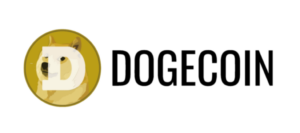Bitcoin active addresses drop to lowest level in 13 years: Here’s why it’s concerning!
The world of cryptocurrency is experiencing a significant event as Bitcoin witnesses a remarkable decline in its active address rate, a phenomenon not observed in over a decade. This drop has sparked discussions about the level of engagement from investors and the shifting dynamics within the market. The decrease in transactions raises concerns about the future trajectory of the most renowned digital currency.
For the month of June, the active bitcoin address rate plummeted to a mere 1.22%, marking the lowest point since November 2010. This decline signifies a notable decrease in the buying and selling activities among bitcoin users. In the week of May 27, only 614,770 active addresses were recorded, a figure not seen since December 2018.
The reduction in the number of active bitcoin addresses points towards a period of consolidation characterized by less frequent transactions. Despite this, a significant 85% of bitcoin holders are currently profiting at the current price level, potentially deterring new investors due to limited upside potential. Moreover, the ownership concentration among large holders stands at 12%, indicating a relatively decentralized ownership structure that mitigates the risks of price manipulation.
Additionally, data reveals that 70% of bitcoin holders have held onto their assets for over a year, demonstrating a strong belief in the future of cryptocurrencies. However, the presence of 25% medium-term holders and 5% short-term holders suggests some liquidity in the market and recent buying activities.
The cryptocurrency market is currently witnessing a standoff between bullish and bearish sentiments. The narrowing gap between the two camps indicates a growing sense of caution or even pessimism among traders. This shift could be linked to the low address activity, signaling a lack of user engagement or fresh investments in Bitcoin.
Technical analysis, utilizing indicators such as the Ichimoku cloud and RSI divergence, suggests a potential bullish trend. The price of Bitcoin is slightly above the Ichimoku cloud, a bullish signal, while the RSI indicator, hovering around 10, indicates a significant divergence with relatively high momentum, potentially signaling a bullish trend if the RSI surpasses the median line of 50.
However, the network value to transaction (NVT) ratio indicates volatility and a general downward trend in usage compared to network valuation, implying that the current price levels may not be sustainably supported by actual transactional activity.
The decline in the active bitcoin address rate to levels unseen since 2010 reflects a phase of market consolidation. Despite positive technical signals, investor caution and market volatility introduce uncertainty into making predictions. Bitcoin holders must closely monitor these trends to anticipate future market movements.






